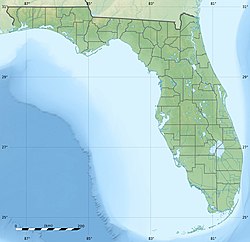Majiacun 형성
Majiacun Formation| Majiacun 형성 Stratigraphic 범위: 늦Coniacian-late 산 토니안. ~86–85 엄마 PreꞒ Ꞓ OSDCPTJKPg N↓. | |
|---|---|
 위치 | |
| 형식 | 양 형성 |
| Sub-units | Unit2 |
| Underlies | Sigou 형성 |
| Overlies | 가오거우 포메이션 |
| Lithology | |
| 초등 | Mudstone, 실트암 |
| 기타 | 사암, 복합 기업 같아 |
| 위치 | |
| 좌표 | 33°12′N 111°48′E/33.2°N 111.8°ECoordinates:33°12′N111°48′E/33.2°N 111.8°E/33.2;111.8. |
| 근사 paleocoordinates | 33°12′N 104°18′E/33.2°N 최고 1043°E |
| 지역 | 허난 후베이 성 |
| 나라 | |
| Extent | 시샤 분지 |
그 Majiacun 형성하는 중국에서Coniacian 지질을 형성하는데Santonian 있다.[1]공룡으로 남아 있는 형성에서 출토된 화석에 속한다.
Paleofauna
- Bactrosaurus[2](원래 Bakesaurus으로 알려져 남아 있)[3][4].
- Mosaiceratops azumai[5]
- Xixiasaurus henanensis[6]
- 시시아니쿠스 장이[7]
- 힝시아노사우루스 후비넨시스[8][3]
- 장청룽양청엔시스[9]
- 바리오니치네 인데?(공유 시너포모피스가 존재하지 않아 불확실한 시노포드를 생성)[10]
- 화석란
- 이크노포실스
참고 항목
참조
- ^ Majiacun Formation Fossilworks.org
- ^ Li, Z. (2001). "Distribution, burying and classification of dinosaur fossils in Upper Cretaceous strata at Meipu Town, Yunxian County of Hubei Province". Hubei Geology & Mineral Resources. 15 (4): 25–31.
- ^ a b Zhou, S.Q.D. (2005). The Dinosaur Egg Fossils in Nanyang, China. China University of Geosciences Press. pp. 1–145. ISBN 978-7-562-52033-7.
- ^ 해리스, 제리 D, 2006년"새로운 공룡?"
- ^ 정 외, 2015년
- ^ 2010년 뤼 외
- ^ 쉬 외, 2010년
- ^ 리, 정키.(2001).후베이 성 윈시안 현 메이푸 타운에 있는 백악기 상층부의 공룡 화석의 분포, 매장 및 분류.후베이 지질 & 광물 자원, 15(4)(총 37번): 25-31.[1]
- ^ 싱 외, 2014년
- ^ Hone 외, 2010
- ^ a b c 저우앤펑, 2002년
- ^ 량 외, 2009년
- ^ a b c d 자오, 1979년
참고 문헌 목록
- ; ; ; , and . 2015. New hadrosauroid material from the Upper Cretaceous Majiacun Formation of Hubei Province, central China. Vertebrata PalAsiatica 53. 245–264.
- ; , and . 2015. A psittacosaurid-like basal neoceratopsian from the Upper Cretaceous of central China and its implications for basal ceratopsian evolution. Scientific Reports 5. 14190:1–9.
- ; ; ; ; ; ; ; , and . 2014. A New Basal Hadrosauroid Dinosaur (Dinosauria: Ornithopoda) with Transitional Features from the Late Cretaceous of Henan Province, China. PLoS ONE 9. e98821. PMC 4047018 doi:10.1371/journal.pone.0098821 PMID 24901454
- ; , and . 2010. A probable baryonychine (Theropoda: Spinosauridae) tooth from the Upper Cretaceous of Henan Province, China. Vertebrata PalAsiatica 48. 19–26.
- ; ; ; ; , and . 2010. A new troodontid theropod from the Late Cretaceous of central China, and the radiation of Asian troodontids. Acta Palaeontologica Polonica 55. 381–388.
- ; ; ; ; ; , and . 2010. A basal parvicursorine (Theropoda: Alvarezsauridae) from the Upper Cretaceous of China. Zootaxa 2413. 1–19.
- ; ; ; , and . 2009. Dinosaur eggs and dinosaur egg-bearing deposits (Upper Cretaceous) of Henan Province, China: Occurrences, palaeoenvironments, taphonomy and preservation. Progress in Natural Science 19. 1587–1601.
- , and . 2002. Studies on the occurrence beds of Oölithus and their relations to the upper-lower boundaries in Henan province. Resources Survey & Environment 23. 68–76.
- . 1979. Discovery of the dinosaurian eggs and footprint from Neixiang county, Henan province. Vertebrata PalAsiatica 17. 304–309.




